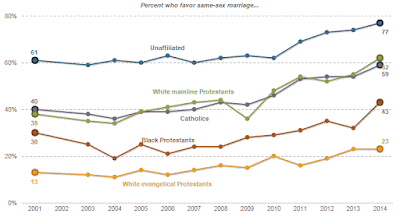Given the ubiquity of smartphones, it's difficult to remember a time before they were here. Which is all the more amazing since the event that spurred them into popularity, the launch of the first iPhone, was in 2007 so we've had less than ten years of them in our lives, and already they are completely indispensable.
From that iPhone launch in 2007 there are now nearly 2 billion smartphones in the world as of 2015, which is predicted to rise to 2.56 billion by 2018.
When the iPhone launched in 2007 it debuted at $499 or $599 depending on model, whereas now you can buy landfill Android handsets for as little as $30. So we're not talking elite purchases, we're talking about fully democratised pocket computing, which is why the next billion internet users are expected to be mobile-only. This is why Google's Android One programme is targeting low end phones at the Asian market for around the $100 mark.
Or to put it another way, when the most powerful supercomputer in the world, IBM's Deep Blue supercomputer, beat chess grand master Gary Kasparov in 1997 it did so with a then staggering 11.38 GFLOPS of processing power (where a gigaflop is a billion calculations a second). Today you can get a reasonably good phone like the Samsung Galaxy S5 which will do 142 GFLOPS in your pocket. Or indeed high-end phones using the same processor as the Google Nexus 9 that will do 364 GFLOPS.
How's that game of Flappy Birds coming on?
From that iPhone launch in 2007 there are now nearly 2 billion smartphones in the world as of 2015, which is predicted to rise to 2.56 billion by 2018.
 |
| Source: eMarketer |
The following Radio Shack catalogue advert from 1991 shows computers, phones, camcorders, cameras, dictaphones, music players etc., all of which are nowadays redundant items thanks to that phone in your pocket. Just to put this technological leap in perspective, in 1991 you would have paid $3.56 million to buy the equivalent gadgets individually and corresponding computing power that would duplicate the functionality of an iPhone today:
In fact, you can easily run PlayStation 2 games on your phone nowadays, which back in the year 2000 took the best selling games console ever to run.
Today, your mobile phone has way more computer power than all of NASA back in 1969, when it placed two astronauts on the moon. And NASA had multiple rooms full of IBM System/360 Model 75 mainframe computers, costing up to $3.5 million apiece plus the computers on board the Apollo spacecraft themselves.
Today, your mobile phone has way more computer power than all of NASA back in 1969, when it placed two astronauts on the moon. And NASA had multiple rooms full of IBM System/360 Model 75 mainframe computers, costing up to $3.5 million apiece plus the computers on board the Apollo spacecraft themselves.
Or to put it another way, when the most powerful supercomputer in the world, IBM's Deep Blue supercomputer, beat chess grand master Gary Kasparov in 1997 it did so with a then staggering 11.38 GFLOPS of processing power (where a gigaflop is a billion calculations a second). Today you can get a reasonably good phone like the Samsung Galaxy S5 which will do 142 GFLOPS in your pocket. Or indeed high-end phones using the same processor as the Google Nexus 9 that will do 364 GFLOPS.
How's that game of Flappy Birds coming on?




